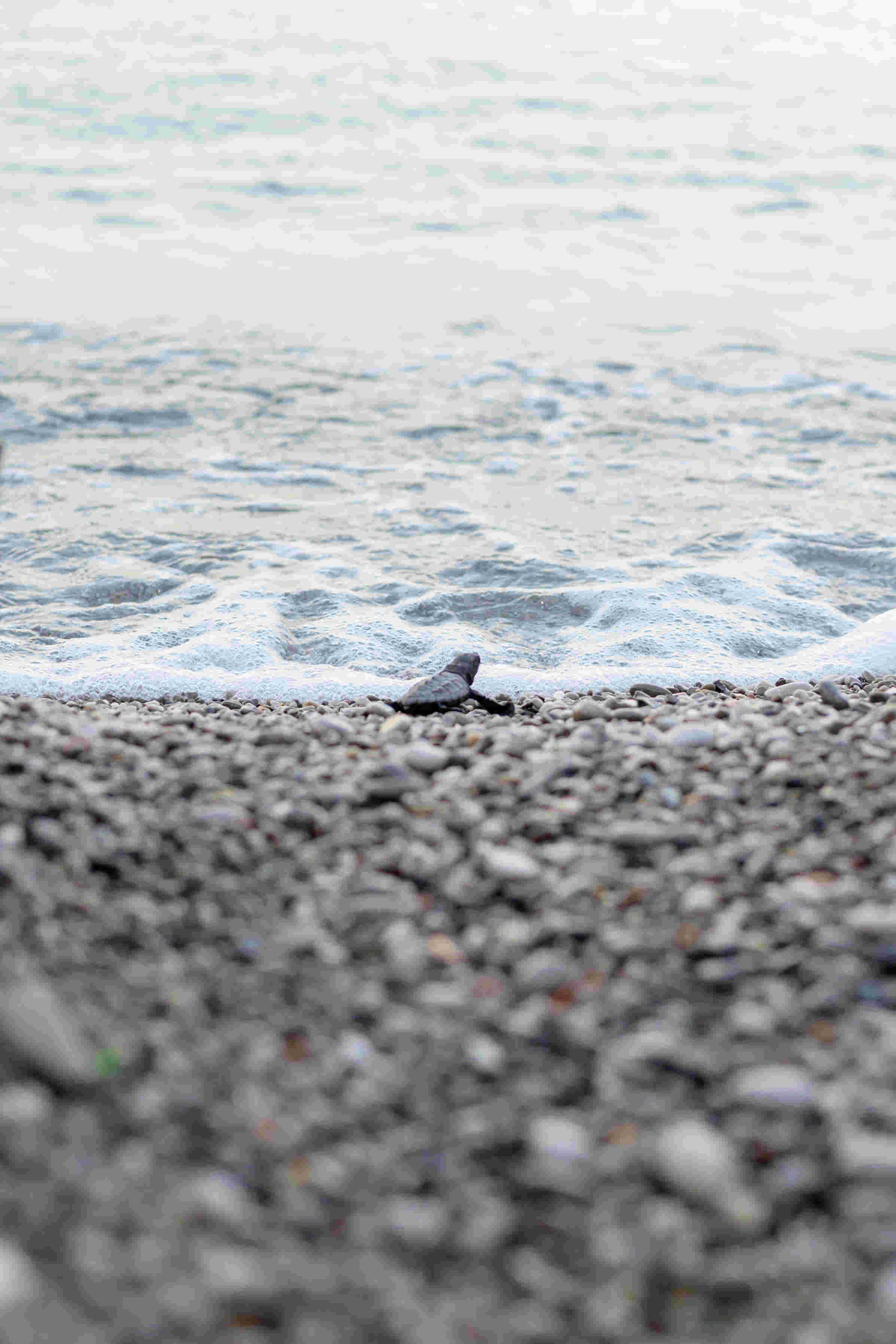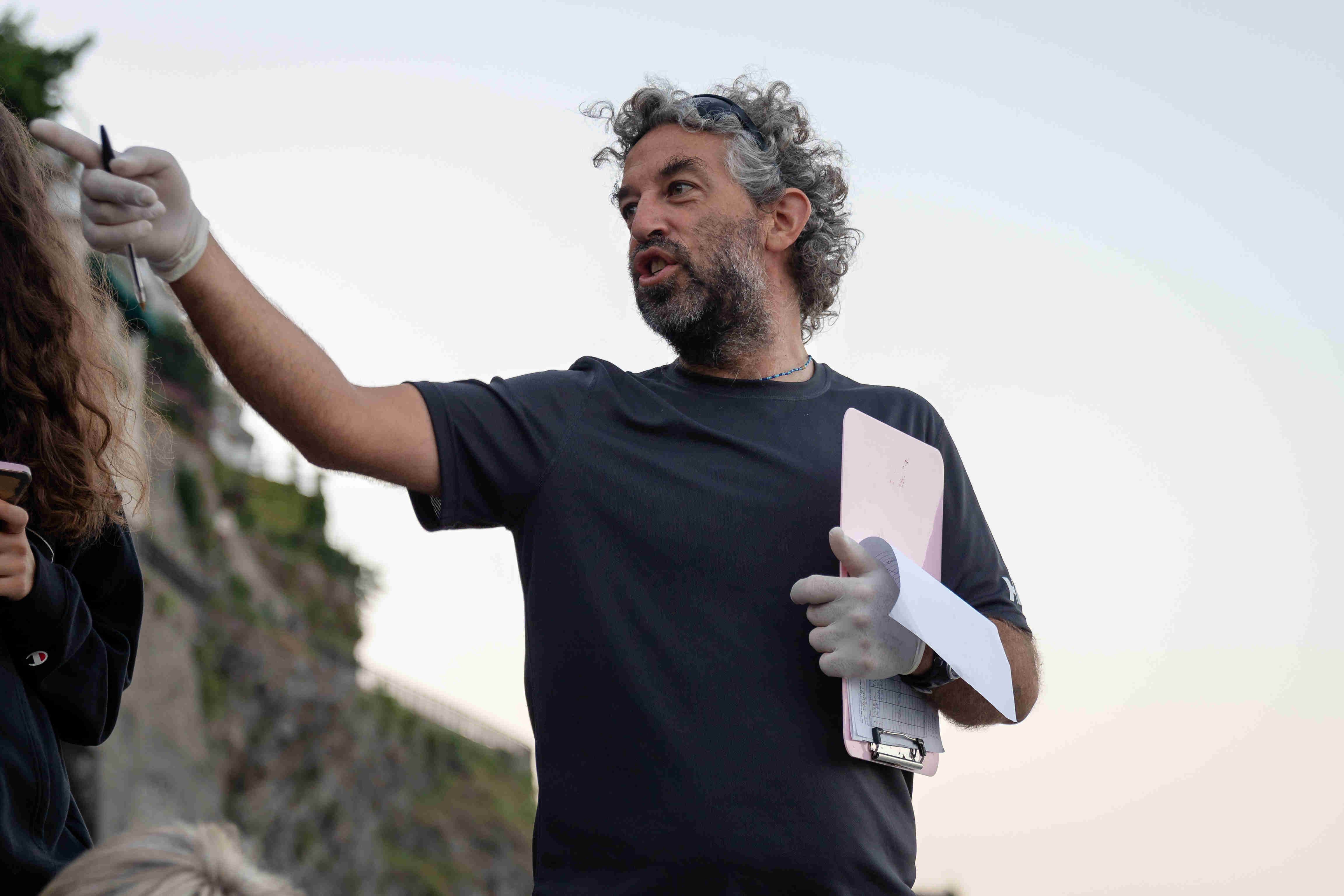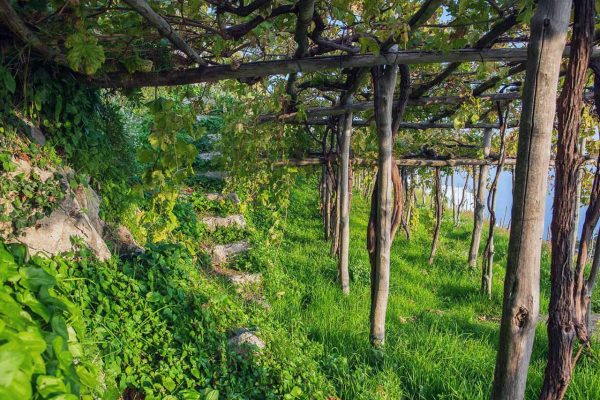Ferragosto Week Among Stars and New Life on the Amalfi Coast: The Turtle Hatchlings of Maiori. An Ancient and Ever-Renewing Miracle Delivers 70 New Turtles to the Sea
20th August 2024 by Susy Pepe. Photos courtesy of Michele Abbagnara and Federica Giordano. Cover Photo Michele Abbagnara
During Ferragosto week in Maiori, the heart of nature beat stronger, illuminating the nights of the Amalfi Coast with an ancient and ever-renewing miracle. Beneath the summer sky, framed by millions of stars and the almost-full moon’s reflection on the sea, the nest of Caretta Caretta began its extraordinary spectacle. The climax occurred yesterday, with the final opening of the nest by specialised operators and marine biologists to tally the eggs and new hatchlings, numbering around 70.
The Turtle Hatchlings in Maiori
The first 49 baby turtles broke through their shells and emerged laboriously from the sand, starting their determined journey towards the Mediterranean during the night between the 14th and 15th of August. On the following night, as Maiori celebrated its patron saint, Santa Maria a Mare, another 19 turtles hatched. Two more followed the same path the next night, in a crescendo of life that moved all those fortunate enough to witness it, thanks to a live broadcast on a big screen set up along the seafront, allowing everyone to experience the emotional event.
All the baby turtles were then released at dawn on the nights. Their release, set against the Norman Tower, was a profoundly moving moment, but not without challenges. During the early hours of the night, the tiny creatures were tempted to return to the shore, drawn by the seafront’s streetlights, losing their way to the sea. As a result, the marine biologists decided to release them at dawn, when the daylight would guide them unwaveringly towards their natural destination.

The Turtle Nest in Maiori: A Collective Journey
The birth of the turtles in Maiori marked the culmination of a long, collective journey. The nest, where a female Caretta caretta had laid her eggs on the night of July 30th after an unsuccessful first attempt due to disturbance from people on the beach, was immediately registered and monitored by the Life Turtle Nest project network. Under the coordination of the Anton Dohrn Station in Naples, the operators of the Marine Protected Area of Punta Campanella monitored the nest, working alongside volunteers from ENPA Costa d’Amalfi and young people from the European Solidarity Corps engaged in the Make It Blue project, promoted by the Acarbio association. Specialist biologists and dozens of young volunteers took care of the nest day and night, under the guidance of Domenico Sgambati, responsible for the AMP Punta Campanella, even staying beside the nest without rest during the hatching days, monitored also by the Coast Guard and the local police of Maiori. A significant deployment of forces was in place to protect these new lives.
The Caretta caretta Nest in Maiori: An Opportunity for Knowledge
During the hatchlings’ monitoring operations, Sgambati explained: “At the end of the hatching, we opened the nest to count how many eggs hatched and how many did not. We collect this data for the Life TurtleNest project, with the aim of understanding what is happening in recent years, as we are seeing an increase in the nesting habitat of the Mediterranean Caretta caretta in the western area and an increase in nests in our territories. This is likely due to climate change, but also to the conservation programmes of the last 30 years, which allow us to have a greater number of turtles in the Mediterranean.”
He then added: “As for Maiori, since we are not in a wild place but in the heart of a populated area, we took the opportunity to set up a permanent information point along the seafront, meeting hundreds of people and informing them about the project, what to do if they encounter turtles coming up onto the beach, or discover a nest, and we provided updates on the nest’s progress. During the hatching, we arranged a live broadcast so that people could enjoy this event without coming down to the beach, thus avoiding disturbing this delicate moment.”

The Amalfi Coast: A Complex Territory
The hatching of the turtle nest in Maiori, the second after a previously unmarked nest in 2021 that only announced itself with the emergence of the baby turtles from the sand, was an extraordinary event, reminding us how the Amalfi Coast is a land of natural wonders, where the cycle of life quietly and powerfully continues alongside human presence. The birth of these tiny creatures is a powerful signal: even in a tourist environment, where the sweet life recently attracted celebrities like Steven Spielberg and Madonna, nature demands its space to express itself in all its magnificence. The contrast between wild life and the luxury of modern life was striking, reminding us of the complexity and variety of this land, even within a few kilometres. It also served as a reminder that human activities must always consider the treasure trove of biodiversity this area hosts, protecting and conserving it, as was done in this case.
The Life Turtle Nest Project
The LIFE TURTLENEST project, co-financed by the European Union through the LIFE programme, aims to improve the conservation of the common Mediterranean sea turtle (Caretta caretta) through nest monitoring and safeguarding activities. Due to global warming, the number of Caretta caretta nests in the western Mediterranean has grown exponentially. LIFE TURTLENEST, coordinated by Legambiente, thus aims to work concretely for the protection of the species and the new nesting sites according to current and future climate scenarios in the Mediterranean, considered one of the most important ecosystems in the world.
In the Western Mediterranean, the new sites potentially suitable for common sea turtle nesting are threatened by pollution, uncontrolled tourist development, climate change, and intensive beach use. Without specific conservation measures, including proactive efforts, the species might not find suitable nesting environments and may not be able to respond to climate change. Hence, the choice to act with Life TurtleNest to protect new and potentially suitable nesting sites, supporting the expansion of the species’ nesting range by safeguarding nests and hatchlings.



